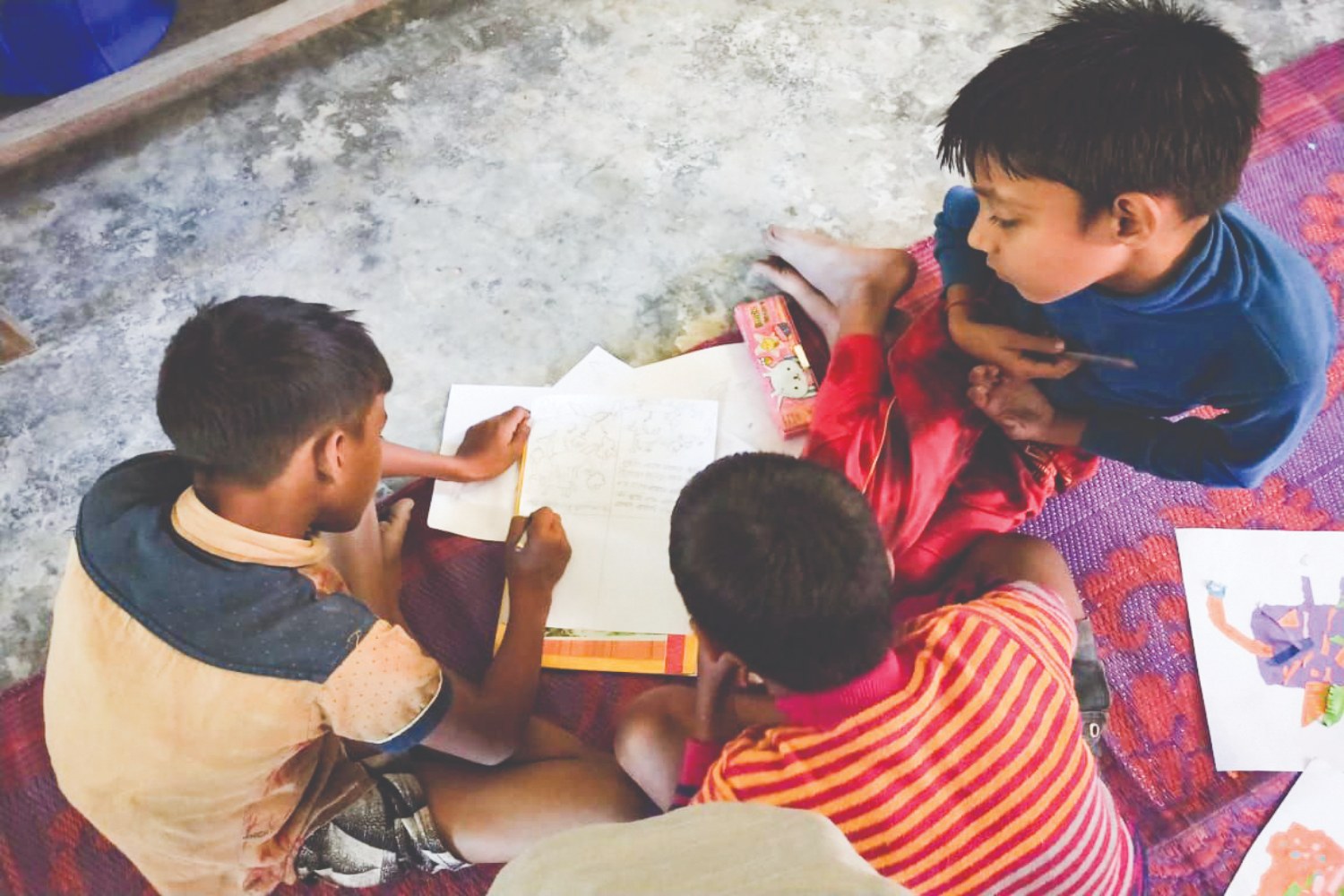The Potential of Visual – Arts in Language Development
Manasi in her essay titled ‘The Potential of Visual Arts in Language Development’ discusses the intimate links between visual arts and learning, especially those related to languages; at the same time, she makes a case for the need to learn the visual arts independent of their links to learning the written word.

Will art ever be considered a mainstream subject within the school curriculum? What comes to mind when we talk about visual art? What role can art play in language development in children? These are some of the questions I find myself asking in my work at Ayang where we engage with lower primary children through library and school development programs. In our mission to make the world of books accessible to all the children of Majuli, we also seek to find engaging ways—through art, for example—to make reading enjoyable.
As an educator, I believe art is indispensable for learning. I have observed how art helps create inclusive spaces for children’s learning, and how it allows children to apply various concepts learned across different subject areas. For instance, I have witnessed children, while closely observing an image of an animal and sketching the same, apply their knowledge of shapes acquired in Math, both geometric and organic. Art can also play an integral role in fostering language development and communication skills in children.
For example, in a collage-making session, it was intriguing for me to observe how my students were communicating with one another, helping peers within their groups while exploring the collage material. In particular, I noticed children within their groups of three, offering suggestions to one another on how they could manipulate the collage material.
In one such instance, A suggested to B, speaking in Assamese, “tumi eikon olop beka ke siga tetiya he ghuronia aas jen lagibo…” (You tear the paper this way to get a curved line). Here, the children were not only sharing ideas and supporting one another, but, in the process, were also building their vocabulary using comparative words such as big-small, curved-straight, etc.
There are many other ways that artmaking extends opportunities to children to communicate and thereby develop their language skills. As children exercise their imagination through art-making processes, they also engage in internal dialogues with themselves as a way to sort through their thoughts.
When children get an opportunity to present their work to others, they use the artistic vocabulary that they have acquired— vocabulary relating to size, colours, textures, emotions, and more—in order to express themselves. Another important aspect of language learning is acquiring listening skills. To learn any language we need to first learn to listen. To this end, I believe art, by providing children with opportunities to hear others’ perspectives, reinforces the development of listening skills.

Integrating Art into Library Spaces
For all the reasons mentioned above, art— that is, visual art—has become an integral part of Ayang’s library activities. It has served as an inclusive medium that allows all our children, of varying learning levels, to participate freely, express their thoughts, and exercise their imagination.
For example, children are often asked to create their own stories and represent them visually as part of Ayang’s postlibrary session activities. These activities involve children within groups sharing their individual ideas for a story with one another, followed by group members incorporating everyone’s ideas into one cohesive story.
Children then go on to sketch the visuals that go along with their story, while writing the script simultaneously. Here, we have found that allowing the use of visual representations significantly supports the development of communication skills, just as much as the written word.
Finally students within each group are provided an opportunity to present their stories to one another, both visually and verbally.
Children creating their own stories and narrating them to others requires clarity of communication. It is important to consider how others comprehend what you are trying to convey. While children discuss with one another the most appropriate way to convey something, at Ayang, I have noticed that our use of visual storytelling—reading an image, speaking about it, listening intently to others’ perspectives—has greatly enhanced our children’s capacity to create their own stories and articulate these clearly.
Often, as children engage in this activity, we have them organize their thoughts about an artwork that they are viewing, share their often unique and differing thoughts, imagine the characters in the artwork, and write a story based on their observations. The gains that our children have made as a result, in their language and literacy development, is undeniable.
Where to from Here?
As we, at Ayang, integrate art into our library program, we are becoming more mindful of how we view art. After all, how one chooses to view art determines the fate of art within education. We therefore choose to uphold art just as much as we do the written word, as we believe both have powerful associated learnings.
When introducing art-making, we choose to approach it with seriousness, linking clear objectives to the process. When engaging children with art, we choose to recognize the benefits of offering children numerous opportunities to freely explore and come to their own distinctive solutions. As I close, I wonder, what choices will you make that could help elevate the position of art?



No approved comments yet. Be the first to comment!